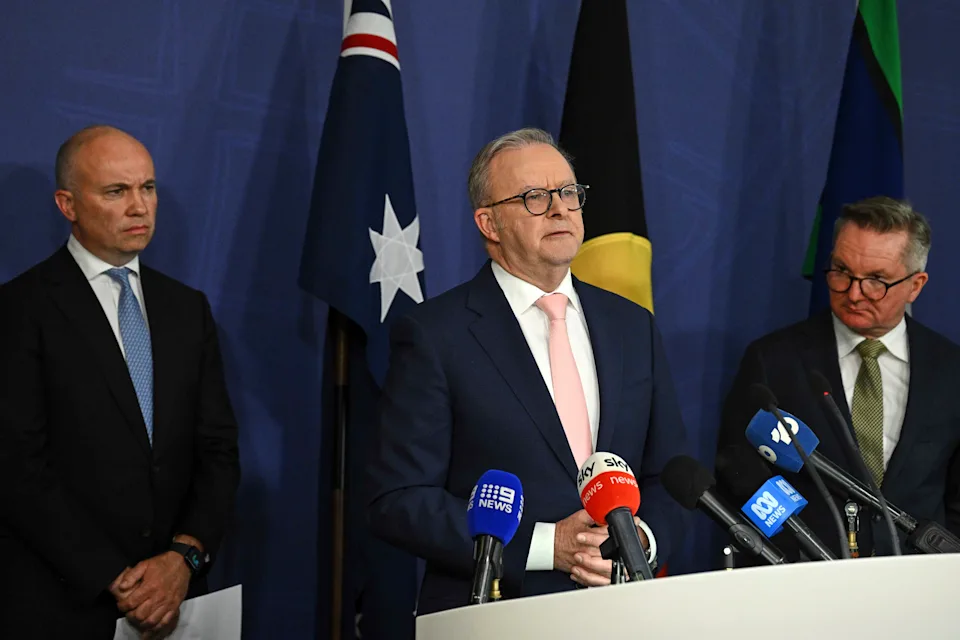Australia Sets 62–70% Emissions Cut Target by 2035, Launches $7 Billion in Climate Funding

- Australia commits to a 62–70% cut in emissions by 2035, up from its 43% by 2030 target.
- Government unveils $7 billion in new climate finance, including a Net Zero Fund and CEFC capital.
- The pledge comes amid political division at home and rising global scrutiny ahead of the UN General Assembly.
Australia has raised its climate ambition, committing to cut emissions by 62–70% by 2035 compared with 2005 levels, a significant step up from its previous target of 43% by 2030. Prime Minister Anthony Albanese announced the new goal on Thursday alongside senior ministers and the Climate Change Authority (CCA), stressing it was “a responsible target supported by science and a practical plan to get there.”
The announcement positions Australia more firmly within the framework of the Paris Climate Agreement, where nations must regularly submit progressively stronger commitments. Albanese will formally present the target to the UN General Assembly in New York later this month.
Finance and Industry: $7 Billion in New Support
The government paired its new target with fresh climate funding designed to accelerate the energy transition and shore up industrial competitiveness. A $5 billion Net Zero Fund within the National Reconstruction Fund will provide capital for industries to decarbonize, while the Clean Energy Finance Corporation (CEFC) will receive an additional $2 billion to advance renewable energy and cut power costs.
Climate Change Minister Chris Bowen framed the policy as both economic necessity and strategic opportunity. “The global shift to clean energy presents the biggest economic transformation since the Industrial Revolution,” he said. “If we make the right investments at the right time, we can grow our economy and create good jobs for Australians.”
Policy Advice and Feasibility
The Climate Change Authority—tasked with advising the government on long-term emissions pathways—recommended the 62–70% target after considering over 500 stakeholder submissions, economic modeling, and the latest climate science. Chair Matt Kean described the range as “ambitious, but absolutely feasible.”
The Authority emphasized that meeting the target will require halving emissions within the next decade, across sectors from power and transport to manufacturing and agriculture.
Kean added: “We have looked at providing a target that will future-proof industry, future-proof the economy, and protect our way of life.”
Climate Risks and Economic Stakes
The announcement follows the release of Australia’s first national climate risk assessment, which warned that no community would be spared from “cascading, compounding and concurrent” impacts of global warming. The report projected increased heatwave deaths, sea level rise threatening 1.5 million people, and potential property losses of A$611 billion ($406 billion) if emissions are not rapidly reduced.
Australia has already warmed beyond the 1.5°C threshold, with the effects evident in bushfires, historic floods, and mass bleaching of the Great Barrier Reef. For investors, the economic stakes extend beyond physical damage to questions of regulatory credibility and global competitiveness.
RELATED ARTICLE: Australia to Mandate Climate Reporting Starting 1 January 2025
Political Divide and Fossil Fuel Tensions
Domestically, the new target has sharpened political divides. Opposition leader Sussan Ley rejected the plan as failing on “cost and credibility,” while Greens and independent MPs argue the government must go further, particularly given its continued approval of fossil fuel projects.
Only last week, Woodside’s North West Shelf gas project was cleared to operate until 2070, a decision denounced by climate advocates as incompatible with the government’s stated ambitions. Greens Senator Larissa Waters called it a “betrayal” by Labor.
Global Context
Under the Paris Agreement, signatories must submit strengthened targets by the end of this month, making Australia’s announcement both timely and strategically important. The government aims to present itself as a credible player in the race to net zero, even as domestic fossil fuel reliance remains entrenched.
For global investors and policymakers, the move illustrates both the progress and contradictions of a resource-dependent economy seeking to pivot toward clean energy leadership.
The Takeaway for ESG Leaders
Australia’s sharpened 2035 target and $7 billion funding package send a signal to markets: decarbonization is now positioned as both environmental imperative and industrial strategy. But the credibility of the shift will be measured less by the number and more by the consistency of policy decisions, especially on fossil fuels.
As Bowen put it: “This presents Australia with our best ever economic opportunity—if we get it right.”








